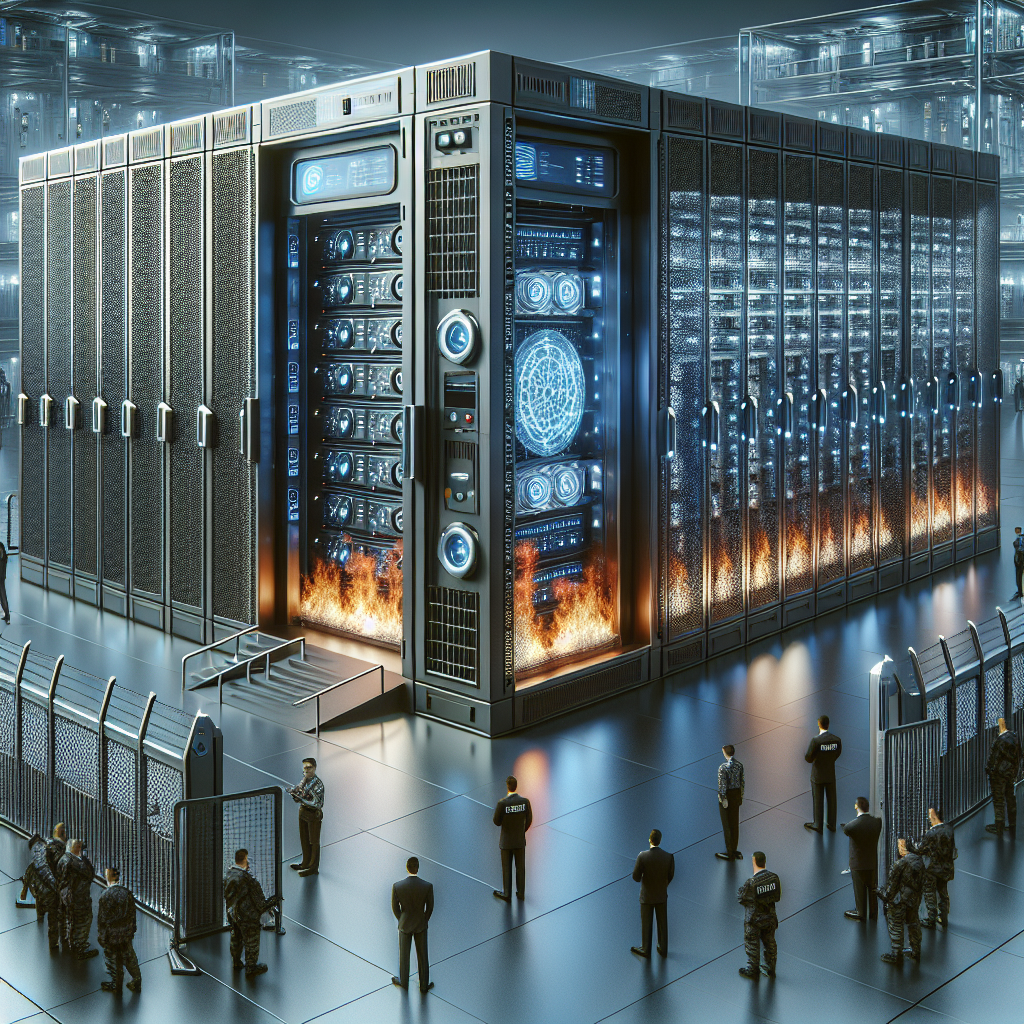Your cart is currently empty!
Tag: Protection
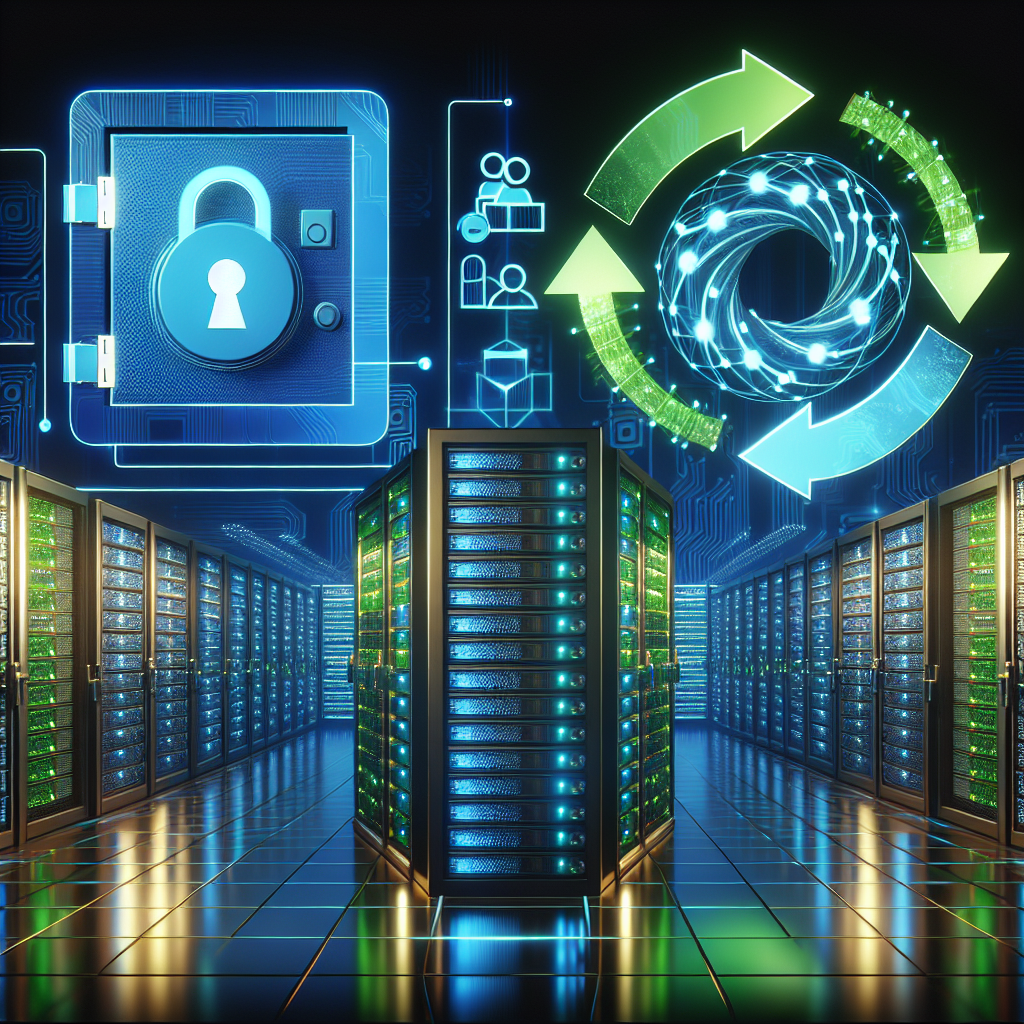
Data Center Backup and Recovery: Strategies for Effective Data Protection
In today’s digital age, data has become one of the most valuable assets for businesses. With the increasing amount of data being generated and stored, the need for effective data protection strategies has never been more important. Data center backup and recovery is a crucial component of any organization’s data protection strategy.Data center backup refers to the process of copying and storing data to protect it in case of data loss or corruption. This is typically done through the use of backup software that creates a duplicate copy of the data and stores it on a separate storage device, such as a tape drive, disk array, or cloud storage.
Data center recovery, on the other hand, refers to the process of restoring data from backup copies in the event of data loss. This can be done through the use of recovery software that retrieves the backup data and restores it to the original location or a new location.
Effective data center backup and recovery strategies are essential to ensure the continuity of business operations and protect against data loss. Here are some key strategies for effective data protection:
1. Regular backups: Regularly backing up data is essential to ensure that the most up-to-date information is protected. This includes not only backing up data files, but also system configurations, applications, and settings.
2. Multiple backup copies: It is important to create multiple backup copies of data to ensure redundancy and minimize the risk of data loss. This can include storing backup copies on-site and off-site, as well as using cloud storage for additional protection.
3. Automated backups: Automating the backup process can help ensure that backups are performed regularly and consistently. This can help reduce the risk of human error and ensure that data is protected in a timely manner.
4. Testing backups: Regularly testing backup copies is essential to ensure that they can be successfully restored in the event of data loss. This can help identify any issues or errors in the backup process and ensure that data can be recovered quickly and effectively.
5. Disaster recovery plan: Developing a comprehensive disaster recovery plan is essential to ensure that data can be recovered in the event of a major data loss event, such as a natural disaster or cyber attack. This plan should outline the steps to be taken to recover data, as well as the roles and responsibilities of key personnel.
In conclusion, data center backup and recovery are essential components of any organization’s data protection strategy. By implementing effective backup and recovery strategies, businesses can ensure the continuity of operations and protect against data loss. Regular backups, multiple backup copies, automated backups, testing backups, and disaster recovery planning are key strategies for effective data protection. By following these best practices, organizations can minimize the risk of data loss and ensure the safety and security of their valuable data assets.

Data Center Inspections: A Critical Component of Cybersecurity and Data Protection
Data centers are the backbone of any organization’s IT infrastructure, housing the servers, storage devices, networking equipment, and other critical components that support the organization’s operations. In today’s digital age, where data is king, protecting the data stored in these data centers is of paramount importance. Data center inspections play a critical role in ensuring that data is secure and protected from cyber threats.Cybersecurity has become a top priority for organizations of all sizes, as cyber attacks continue to increase in frequency and sophistication. Data breaches can have devastating consequences for organizations, including financial losses, damage to reputation, and legal liabilities. In order to prevent data breaches and protect sensitive information, organizations must implement robust cybersecurity measures, including regular data center inspections.
Data center inspections involve a comprehensive review of the physical and technical security measures in place to protect data stored in the data center. This includes evaluating access controls, monitoring systems, fire suppression systems, environmental controls, and other security measures. By conducting regular inspections, organizations can identify vulnerabilities and weaknesses in their data center security posture and take corrective action to address these issues.
One of the key benefits of data center inspections is that they help organizations comply with regulatory requirements related to data protection and cybersecurity. Many industries, such as healthcare, finance, and government, are subject to strict regulations governing the protection of sensitive data. Failure to comply with these regulations can result in severe penalties and fines. By conducting regular inspections, organizations can demonstrate their commitment to data security and compliance with regulatory requirements.
In addition to regulatory compliance, data center inspections also help organizations safeguard their data from cyber attacks. By identifying and addressing security vulnerabilities, organizations can reduce the risk of data breaches and unauthorized access to sensitive information. This not only protects the organization’s data, but also helps to maintain the trust and confidence of customers, partners, and other stakeholders.
In conclusion, data center inspections are a critical component of cybersecurity and data protection. By conducting regular inspections, organizations can identify and address security vulnerabilities, comply with regulatory requirements, and protect sensitive information from cyber threats. Investing in data center inspections is an essential step towards safeguarding data and maintaining the security and integrity of the organization’s IT infrastructure.
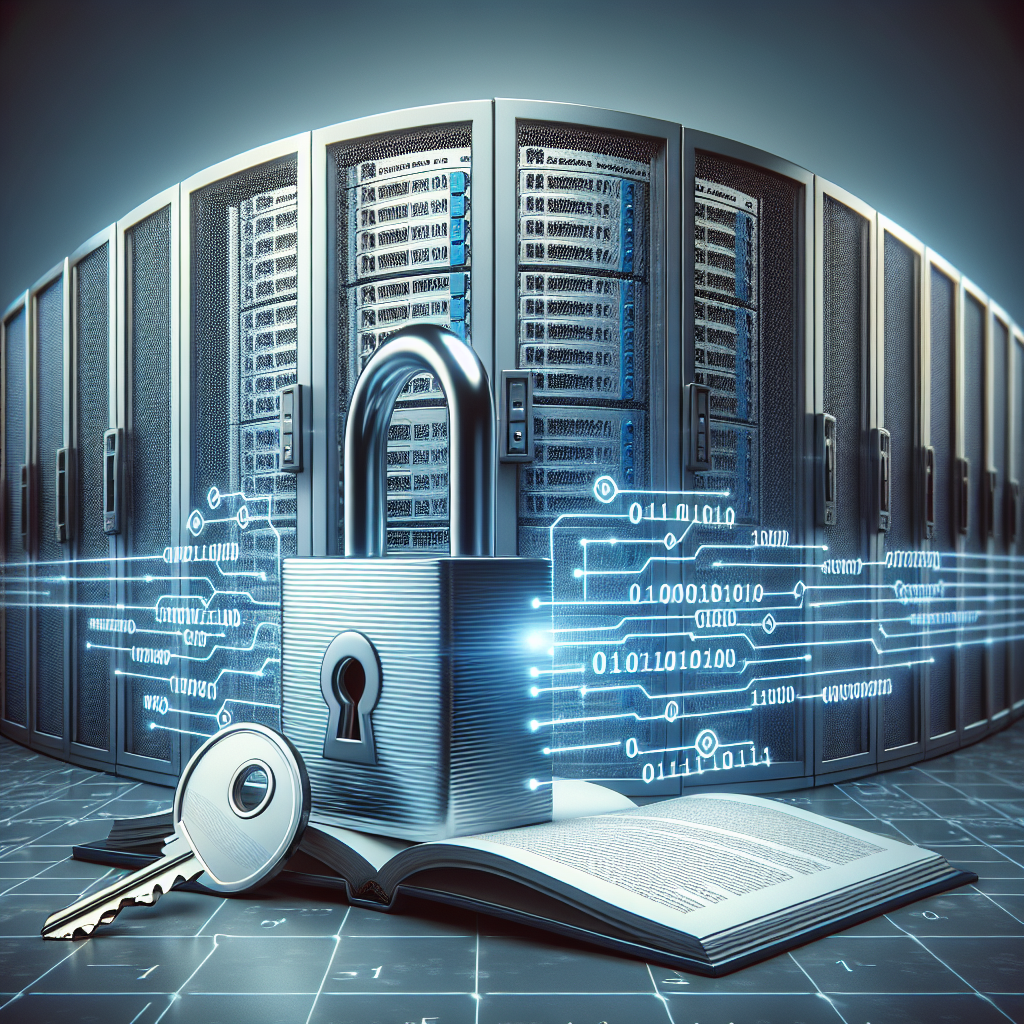
Securing Your Data Center Database: Best Practices for Data Protection
In today’s digital age, data is king. Companies collect and store vast amounts of sensitive information in their data centers, from customer details to financial records. This makes data centers a prime target for cybercriminals looking to steal valuable data for malicious purposes. Therefore, it is imperative for organizations to implement robust security measures to protect their data center databases.Here are some best practices for securing your data center database:
1. Use encryption: Encrypting your data at rest and in transit is essential for protecting it from unauthorized access. Implementing strong encryption algorithms will ensure that even if data is stolen, it will be virtually impossible for hackers to decrypt and use it.
2. Implement access controls: Limiting access to your database to only authorized users is crucial for preventing unauthorized access. Use role-based access controls to ensure that employees only have access to the data they need to perform their job functions.
3. Regularly update software and patches: Keeping your database software up to date with the latest security patches is vital for protecting against known vulnerabilities. Hackers often exploit outdated software to gain access to databases, so make sure to regularly update and patch your systems.
4. Monitor and audit database activity: Monitoring database activity in real-time can help detect any suspicious behavior that could indicate a security breach. Implementing audit logs will allow you to track who accessed the database, what actions they performed, and when they did so.
5. Backup your data: Regularly backing up your data is essential for ensuring that you can recover quickly in the event of a security breach or data loss. Store backups in a secure, offsite location to prevent them from being compromised in the event of a physical breach.
6. Implement multi-factor authentication: Adding an extra layer of security with multi-factor authentication can help prevent unauthorized access to your database. Require users to verify their identity with a second form of authentication, such as a one-time passcode sent to their mobile device.
7. Train employees on data security best practices: Human error is often a weak link in data security, so it’s critical to educate employees on best practices for data protection. Conduct regular training sessions on how to recognize and respond to security threats, and emphasize the importance of following security protocols.
By implementing these best practices for securing your data center database, you can significantly reduce the risk of a data breach and protect your organization’s sensitive information. Remember, data security is an ongoing process that requires constant vigilance and attention to detail. Stay proactive and stay secure.
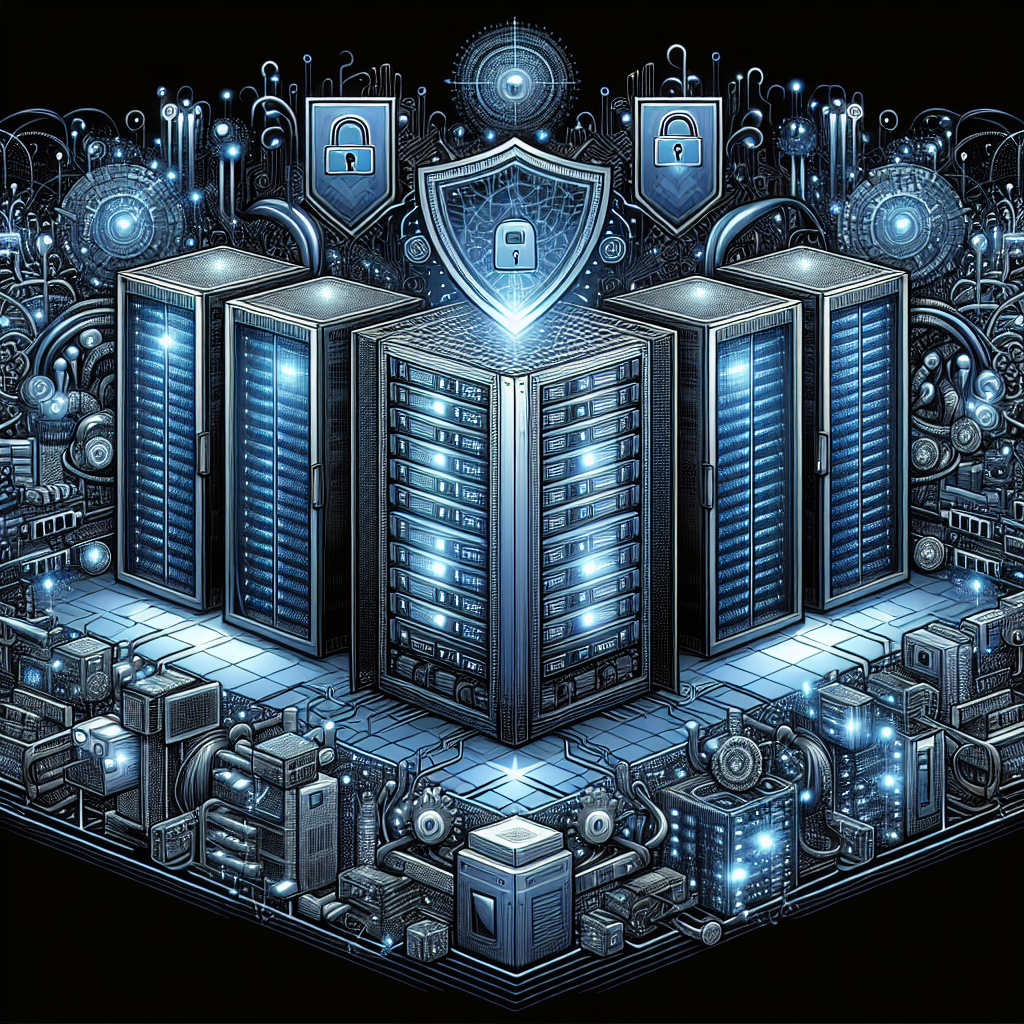
Ensuring Security in Data Center Network Infrastructure: Best Practices for Protection
Data centers play a crucial role in today’s digital world, serving as the backbone for storing, processing, and transmitting vast amounts of data. With the increasing reliance on data centers for various business operations, ensuring the security of the network infrastructure within these facilities has become more important than ever. Data breaches and cyber-attacks can have catastrophic consequences, leading to data loss, financial losses, and damage to an organization’s reputation. To protect against these threats, data center operators must implement best practices for securing their network infrastructure.One of the first steps in ensuring security in a data center network infrastructure is to conduct a thorough risk assessment. This involves identifying potential vulnerabilities and threats, evaluating the impact of a security breach, and determining the likelihood of an attack. By understanding the risks, data center operators can develop a comprehensive security strategy that addresses the most critical areas of concern.
Implementing strong access controls is another key best practice for protecting data center network infrastructure. This includes limiting access to sensitive areas of the facility, such as server rooms and network closets, to authorized personnel only. Access controls should also be implemented for network devices, such as switches, routers, and firewalls, to prevent unauthorized users from making changes to the network configuration.
Regularly updating and patching network devices is essential for maintaining a secure data center network infrastructure. Software vulnerabilities are often exploited by cybercriminals to gain access to systems and data, so it is important to stay up to date with the latest security patches and updates. Additionally, implementing intrusion detection and prevention systems can help identify and block suspicious network traffic that may indicate a potential security threat.
Encrypting data in transit and at rest is another important best practice for protecting data center network infrastructure. By encrypting data, organizations can ensure that sensitive information remains secure, even if it is intercepted by unauthorized users. Data encryption should be implemented at multiple levels, including network traffic, storage devices, and communication channels, to provide comprehensive protection against data breaches.
Monitoring network traffic and performing regular security audits are also critical for ensuring the security of data center network infrastructure. By monitoring network activity, organizations can detect and respond to security incidents in real-time, minimizing the impact of a potential breach. Security audits allow organizations to assess the effectiveness of their security measures and identify any weaknesses that need to be addressed.
In conclusion, ensuring the security of data center network infrastructure is essential for protecting sensitive data and maintaining the trust of customers and stakeholders. By implementing best practices such as conducting risk assessments, implementing access controls, updating and patching network devices, encrypting data, monitoring network traffic, and performing security audits, organizations can strengthen their defenses against cyber threats and mitigate the risk of a security breach. By taking proactive measures to protect their network infrastructure, data center operators can safeguard their data and maintain the integrity of their operations in today’s digital age.

The Cost of Data Center Fire Suppression: Investing in Protection
Data centers are the backbone of modern business operations, housing critical IT infrastructure and sensitive data that keep organizations running smoothly. With the increasing reliance on data centers, the need for robust fire suppression systems to protect these facilities has never been more important.The cost of data center fire suppression systems can vary greatly depending on the size and complexity of the facility, as well as the chosen fire suppression method. However, the investment in a reliable fire suppression system is essential to safeguarding valuable assets and preventing costly downtime.
One of the most common fire suppression methods used in data centers is clean agent suppression systems. These systems use inert gases or chemical agents to extinguish fires quickly without causing damage to sensitive IT equipment. While the upfront cost of installing a clean agent suppression system can be significant, the long-term benefits far outweigh the initial investment.
In the event of a fire, a clean agent suppression system can minimize damage to equipment, reduce downtime, and prevent data loss. This can save organizations millions of dollars in lost revenue and recovery costs that can result from a fire in a data center.
Another important factor to consider when evaluating the cost of data center fire suppression is compliance with industry regulations and insurance requirements. Many insurance companies require data centers to have a properly installed and maintained fire suppression system in order to receive coverage. Failure to comply with these requirements can result in higher insurance premiums or even denial of coverage in the event of a fire.
In addition to protecting valuable assets and ensuring compliance, investing in a reliable fire suppression system can also enhance the overall safety and security of a data center. By proactively addressing the risk of fire, organizations can minimize the potential for injuries to employees and emergency responders, as well as mitigate the impact on surrounding communities.
In conclusion, the cost of data center fire suppression may seem like a significant investment, but the consequences of not having a reliable system in place far outweigh the initial expense. By prioritizing the safety and security of their data centers, organizations can protect their assets, avoid costly downtime, and maintain compliance with industry regulations. Investing in fire suppression is not just a financial decision, but a critical step in ensuring the continuity of business operations and the protection of valuable data.
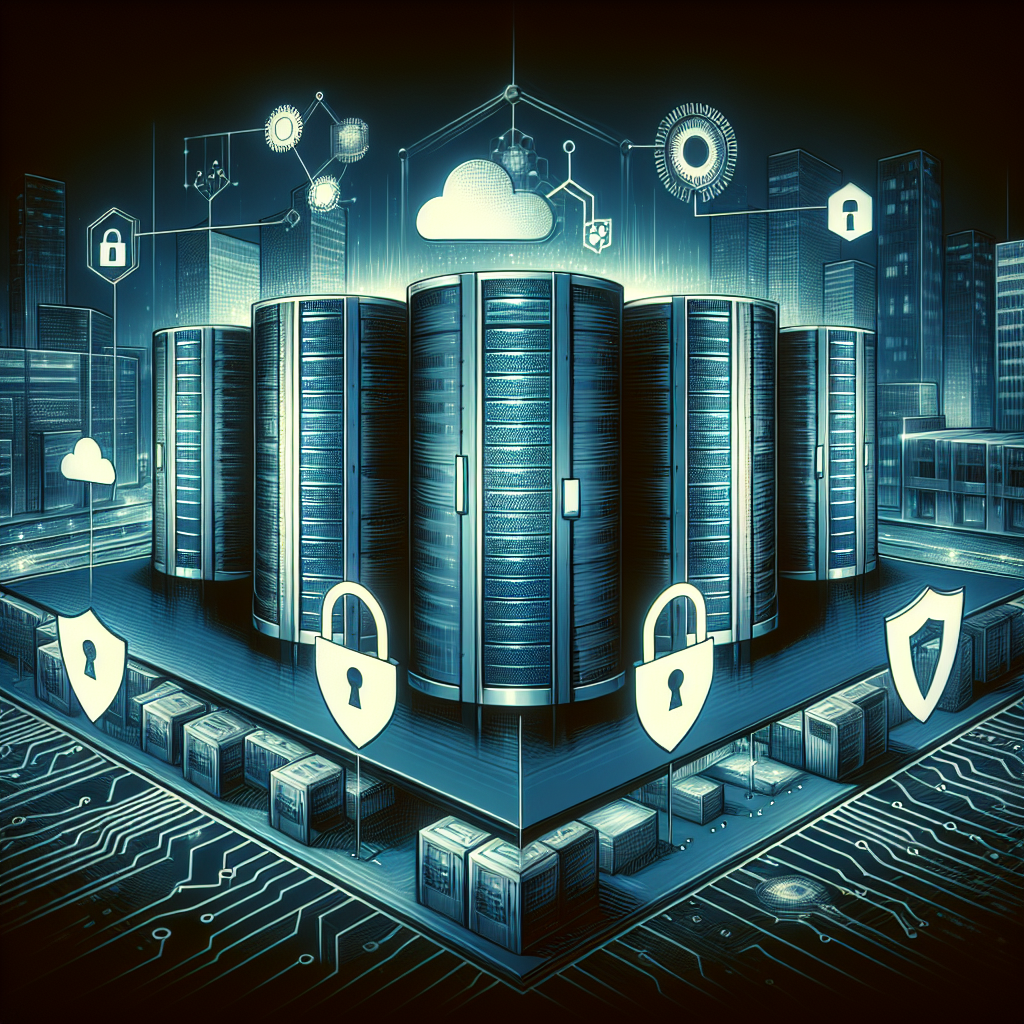
The Impact of Data Center Compliance on Data Protection and Privacy
Data centers play a crucial role in storing and processing vast amounts of data for businesses and organizations. With the increasing reliance on technology and digital platforms, data centers have become essential for ensuring the smooth functioning of operations and the security of sensitive information. However, as data breaches and cyber attacks continue to pose a threat to data security, data center compliance has gained significant importance in ensuring the protection and privacy of data.Data center compliance refers to the adherence to a set of regulations, standards, and best practices that govern how data is stored, processed, and transmitted within a data center environment. These compliance requirements are designed to safeguard data from unauthorized access, breaches, and misuse, thereby protecting the confidentiality, integrity, and availability of sensitive information.
One of the key compliance regulations that data centers must adhere to is the General Data Protection Regulation (GDPR) in the European Union. The GDPR sets out strict guidelines for how personal data should be processed and protected, including requirements for data encryption, access controls, and data breach notifications. Non-compliance with the GDPR can result in hefty fines and reputational damage for businesses, making it essential for data centers to implement robust data protection measures.
In addition to the GDPR, data centers must also comply with industry-specific regulations such as the Health Insurance Portability and Accountability Act (HIPAA) for healthcare data, the Payment Card Industry Data Security Standard (PCI DSS) for credit card information, and the Federal Information Security Management Act (FISMA) for government data. These regulations impose specific requirements for data security, access controls, and audit trails to ensure the protection of sensitive data.
Ensuring compliance with these regulations is not only a legal requirement but also crucial for maintaining trust and credibility with customers and stakeholders. Data breaches can have severe consequences for businesses, leading to financial losses, legal liabilities, and damage to reputation. By adhering to data center compliance standards, organizations can demonstrate their commitment to data protection and privacy, building trust with customers and ensuring the security of their information.
In conclusion, the impact of data center compliance on data protection and privacy cannot be overstated. Compliance with regulations such as the GDPR, HIPAA, PCI DSS, and FISMA is essential for safeguarding sensitive data and maintaining the trust of customers. Data centers must prioritize data security and implement robust compliance measures to protect against data breaches and cyber attacks. By investing in data center compliance, organizations can ensure the integrity and confidentiality of their data, mitigating risks and safeguarding their reputation in an increasingly digital world.

The Role of Physical Security in Data Center Protection
Data centers are vital components of any organization’s IT infrastructure. They house a vast amount of sensitive data, including proprietary information, financial records, and customer data. Given the critical nature of the data stored in these facilities, protecting them from physical threats is of utmost importance. This is where physical security measures come into play.Physical security in data centers refers to the measures put in place to safeguard the physical infrastructure of the facility from unauthorized access, theft, vandalism, and other potential threats. These measures are essential in ensuring the integrity, availability, and confidentiality of the data stored within the facility.
One of the key components of physical security in data centers is access control. Access control systems, such as keycard readers, biometric scanners, and security guards, are used to restrict access to the facility to authorized personnel only. This helps prevent unauthorized individuals from gaining entry to the data center and potentially compromising the data stored within.
Surveillance systems also play a crucial role in data center protection. Closed-circuit television (CCTV) cameras are strategically placed throughout the facility to monitor and record activities in and around the data center. This not only acts as a deterrent to potential intruders but also serves as valuable evidence in the event of a security breach.
Another important aspect of physical security in data centers is environmental controls. Data centers require specific environmental conditions, such as temperature and humidity levels, to ensure the optimal functioning of the equipment housed within. Environmental monitoring systems are used to continuously monitor these conditions and alert personnel to any deviations that could potentially damage the equipment and compromise the data stored within.
In addition to access control, surveillance, and environmental controls, physical security in data centers also includes measures such as perimeter fencing, security lighting, intrusion detection systems, and security patrols. These layers of security work together to create a comprehensive defense against physical threats to the data center.
Ultimately, the role of physical security in data center protection is to mitigate risks and ensure the safety and security of the data stored within the facility. By implementing robust physical security measures, organizations can safeguard their critical data assets and maintain the trust of their customers and stakeholders.
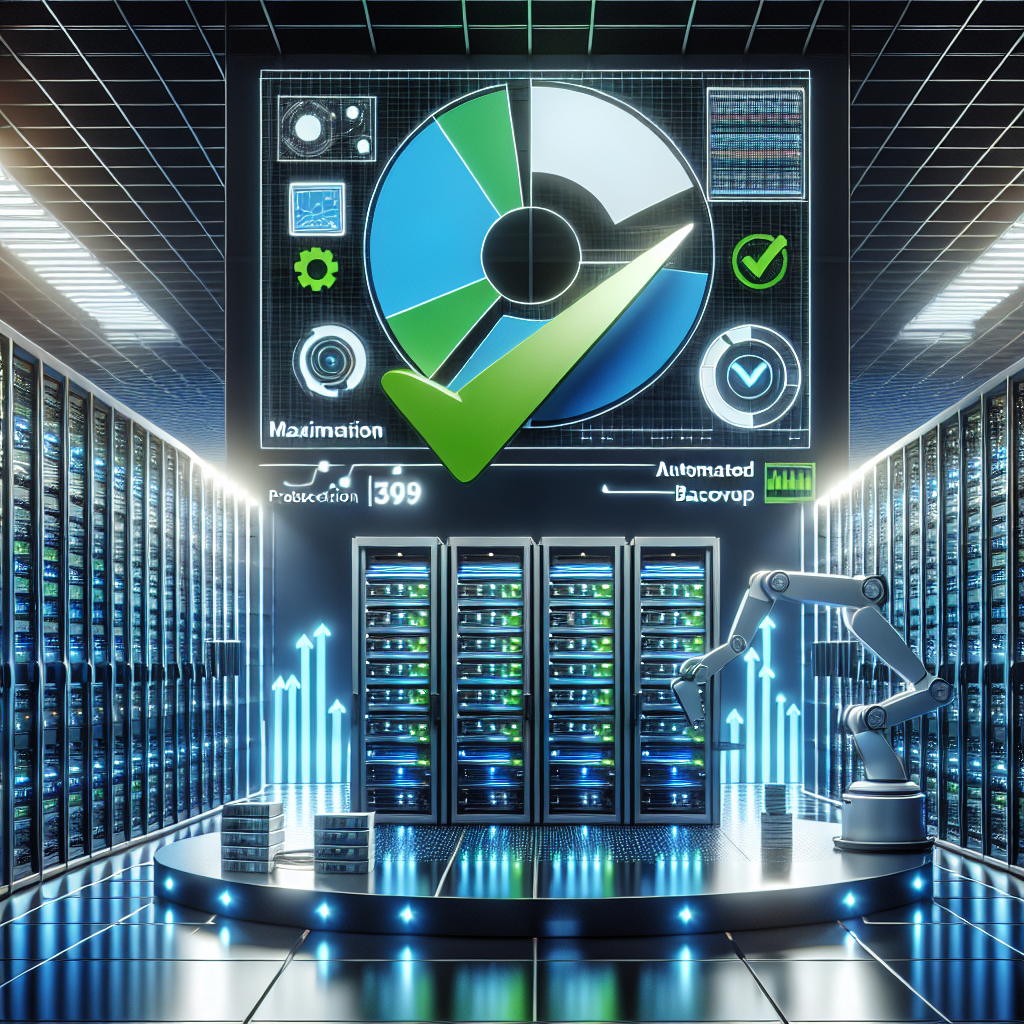
Maximizing Data Protection with Automated Backup and Recovery in the Data Center
In today’s digital age, data protection is more important than ever. With cyber threats on the rise and data breaches becoming increasingly common, businesses must take proactive measures to safeguard their sensitive information. One of the most effective ways to do this is through automated backup and recovery in the data center.Automated backup and recovery solutions are essential for ensuring that critical data is protected and easily recoverable in the event of a disaster. By automating the backup process, businesses can ensure that their data is regularly backed up without the need for manual intervention. This not only saves time and resources, but also reduces the risk of human error that can lead to data loss.
In addition to regular backups, automated recovery solutions play a crucial role in maximizing data protection. In the event of a system failure or cyber attack, automated recovery tools can quickly and efficiently restore data to its original state, minimizing downtime and ensuring business continuity. This is essential for preventing costly disruptions and maintaining customer trust.
Furthermore, automated backup and recovery solutions offer advanced features such as data encryption, compression, and deduplication, which further enhance data protection. Encryption ensures that data is securely stored and transmitted, while compression and deduplication reduce storage requirements and improve efficiency.
By implementing automated backup and recovery solutions in the data center, businesses can maximize their data protection efforts and minimize the risk of data loss. These solutions help businesses comply with industry regulations, protect sensitive information, and maintain a competitive edge in today’s data-driven economy.
In conclusion, automated backup and recovery solutions are essential for maximizing data protection in the data center. By automating the backup process, businesses can ensure that their data is regularly backed up and easily recoverable in the event of a disaster. These solutions offer advanced features such as encryption, compression, and deduplication, which further enhance data protection. Overall, investing in automated backup and recovery solutions is a smart decision for businesses looking to safeguard their critical data and maintain business continuity in today’s digital age.
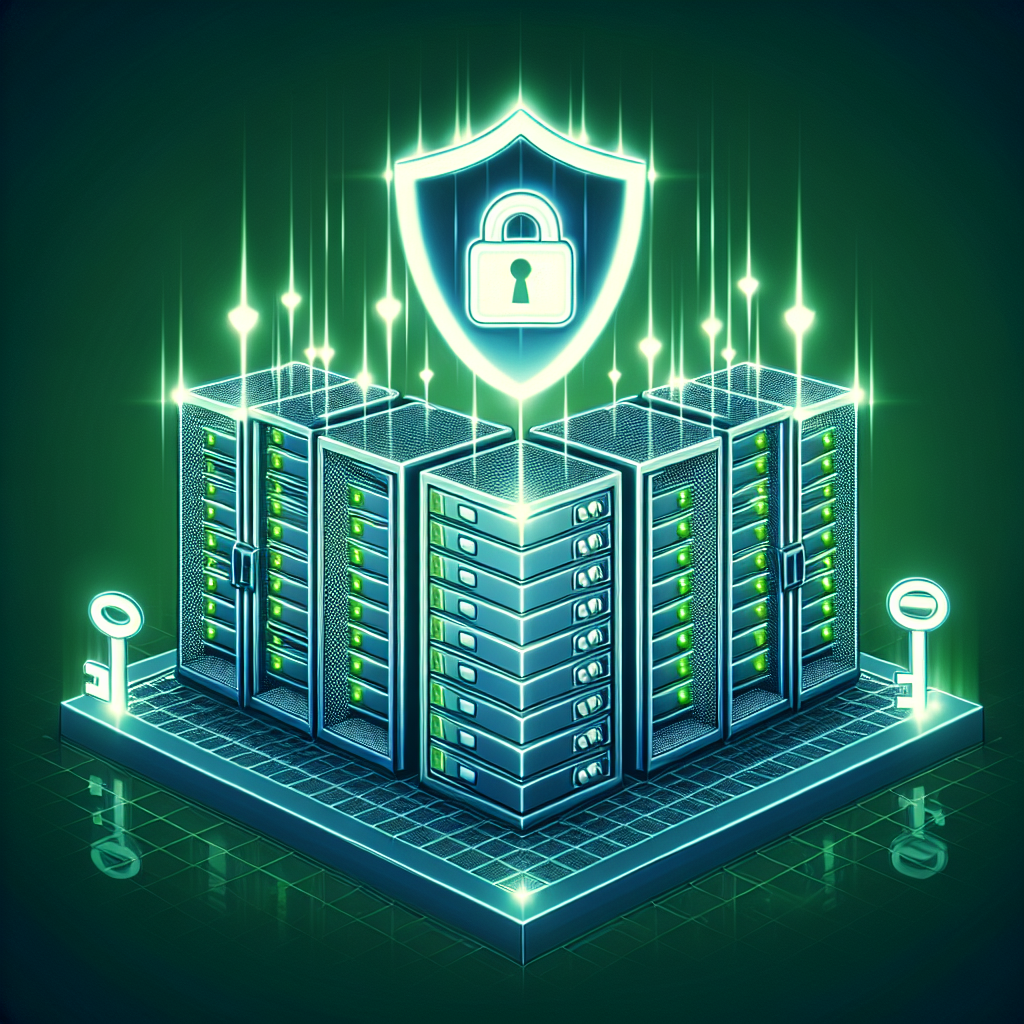
Securing Your Data Center Database: Strategies for Protection
In today’s digital age, data centers have become the backbone of many organizations, housing critical information that is essential for their operations. However, with the increasing number of cyber threats and data breaches, securing the data center database has become more important than ever. Without proper protection, sensitive information stored in the database could be compromised, leading to severe consequences for the organization.To ensure the security of your data center database, it is crucial to implement effective strategies for protection. Here are some key steps that you can take to safeguard your database:
1. Encrypt sensitive data: One of the most effective ways to protect your data center database is by encrypting sensitive information. Encryption converts data into a secure format that can only be accessed with the appropriate decryption key, making it virtually impossible for unauthorized users to read or manipulate the data.
2. Implement access controls: Limiting access to the database is essential for preventing unauthorized users from tampering with or stealing sensitive information. By implementing access controls, you can ensure that only authorized individuals have the necessary permissions to access and modify the database.
3. Regularly update security patches: Keeping your database software up to date is crucial for protecting against known vulnerabilities and security threats. Make sure to regularly install security patches and updates provided by the database vendor to ensure that your system is protected against the latest threats.
4. Monitor database activity: Monitoring database activity is essential for detecting any suspicious behavior that could indicate a potential security breach. By monitoring user activity, you can identify unauthorized access attempts, unusual data transfers, or other signs of malicious activity and take appropriate action to mitigate the threat.
5. Backup your data: Regularly backing up your database is essential for ensuring that you can recover your data in the event of a security breach or data loss. Make sure to store backups in a secure location separate from the main database to prevent them from being compromised in the event of a cyber attack.
6. Conduct regular security audits: Regularly conducting security audits of your data center database can help identify potential vulnerabilities and weaknesses that could be exploited by cybercriminals. By performing regular security assessments, you can proactively address any security issues and strengthen your database’s defenses.
Securing your data center database is essential for protecting sensitive information and safeguarding your organization from cyber threats. By implementing these strategies for protection, you can enhance the security of your database and reduce the risk of a data breach. Remember, investing in robust security measures now can save you from costly repercussions in the future.
